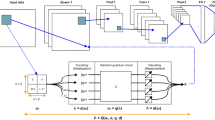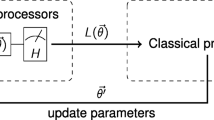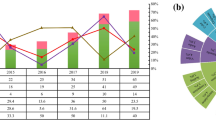Abstract
When quantum algorithms are used in machine learning systems, it is referred to as “quantum machine learning.” An approach known as “quantum-enhanced machine learning” utilizes a quantum computer to evaluate classical data to boost machine learning. Data may be processed and stored more quickly and efficiently with the help of quantum machine learning. Using neural networks as analogies for physical systems is an important part of quantum machine learning. This paper summarizes the CIFAR-10 dataset. For the dataset, “five training batches and one testing batch” are used to divide the ten thousand photographs. One thousand images from each class are randomly selected for inclusion in the test batch. Even though each batch comprises all of the remaining photographs, some batches have a greater number of images from a particular category. It is estimated that each training batch contains around 5000 photographs. This section includes an evaluation of the classifier’s overall performance. Quantum neural networks describe “a parameterized quantum computational model best” implemented “on a quantum computer” (QNN). Third-party libraries such as PyTorch, Qiskit, and matplotlib are frequently loaded into the program. PyTorch is a popular option for GPU and CPU-based Deep Learning applications because it is built on Torch rather than merely Python. All of your quantum computing needs may be met by Qiskit, a Python library. Importing it will be necessary after the system is installed. Creating static, animated, and interactive graphics is easy with Matplotlib, a Python toolkit. To begin, we need to identify the quantum layers that will make up the circuit’s structure.
Access this chapter
Tax calculation will be finalised at checkout
Purchases are for personal use only
Similar content being viewed by others
References
Ławrynowicz A (2014) Introducing machine learning. Research Gate
Jakulin A (2013) Machine learning based on attribute interactions. Seˇzana
Sokolov A (2018) Research of classical machine learning methods and deep learning models effectiveness in detecting anomalies of industrial control system. Research Gate.
Abraham A (2013) Comparison of supervised and unsupervised learning algorithms for pattern classification. Research Gate.
Gallo C (2015) Artificial Neural Networks: a tutorial. Research Gate
Fastovets DV (n.d.) Machine learning methods in quantum computing theory. Valiev Institute of Physics and Technology of Russian Academy of Sciences, Russia
Hohman F (2020) CNN explainer: learning convolutional neural networks with interactive visualization
Ketamo H (2019) Interactive machine learning: managing information richness in highly anonymized conversation data. Research Gate.
Rakesh H (2019) Quantum machine learning: a review and current status. Research Gate
Iqbal HS (2021) Machine learning: algorithms, real-world applications, and research directions
Pineau J (2018) An introduction to deep reinforcement learning
Wenskovitch J (n.d.). Machine learning from user interaction for visualization and analytics: a workshop-generated research agenda
Deng L (2014) Deep learning: methods and applications. 07
Mishra N et al (2021) Quantum machine learning: a review and current status. Adv Intell Syst Comput 1175:101–145. https://doi.org/10.1007/978-981-15-5619-7_8
Alloghani MA (2020) A systematic review on supervised and unsupervised machine learning algorithms for data science. Research Gate.
Wittek P (2014) Quantum machine learning: what quantum computing means to data mining. Research Gate
Liu Q (2012) Supervised learning. Research Gate
Richard S (2015) Reinforcement learning: an introduction
Goldman SA (n.d.) Computational learning theory
Siadati S (2018) What is unsupervised learning? Research Gate
Sivakumari S (2021) Deep Learning Techniques: An Overview. Research Gatech Gate2
Zhang Y (n.d.) Recent Advances in Quantum Machine Learning. 1School of Computing and Communications, Lancaster University, United Kingdom.
Author information
Authors and Affiliations
Corresponding author
Editor information
Editors and Affiliations
Rights and permissions
Copyright information
© 2023 The Author(s), under exclusive license to Springer Nature Singapore Pte Ltd.
About this paper
Cite this paper
Raj, A., Vaithiyashankar, J. (2023). Image Classification Using Quantum Machine Learning. In: Joby, P.P., Balas, V.E., Palanisamy, R. (eds) IoT Based Control Networks and Intelligent Systems. Lecture Notes in Networks and Systems, vol 528. Springer, Singapore. https://doi.org/10.1007/978-981-19-5845-8_26
Download citation
DOI: https://doi.org/10.1007/978-981-19-5845-8_26
Published:
Publisher Name: Springer, Singapore
Print ISBN: 978-981-19-5844-1
Online ISBN: 978-981-19-5845-8
eBook Packages: EngineeringEngineering (R0)




